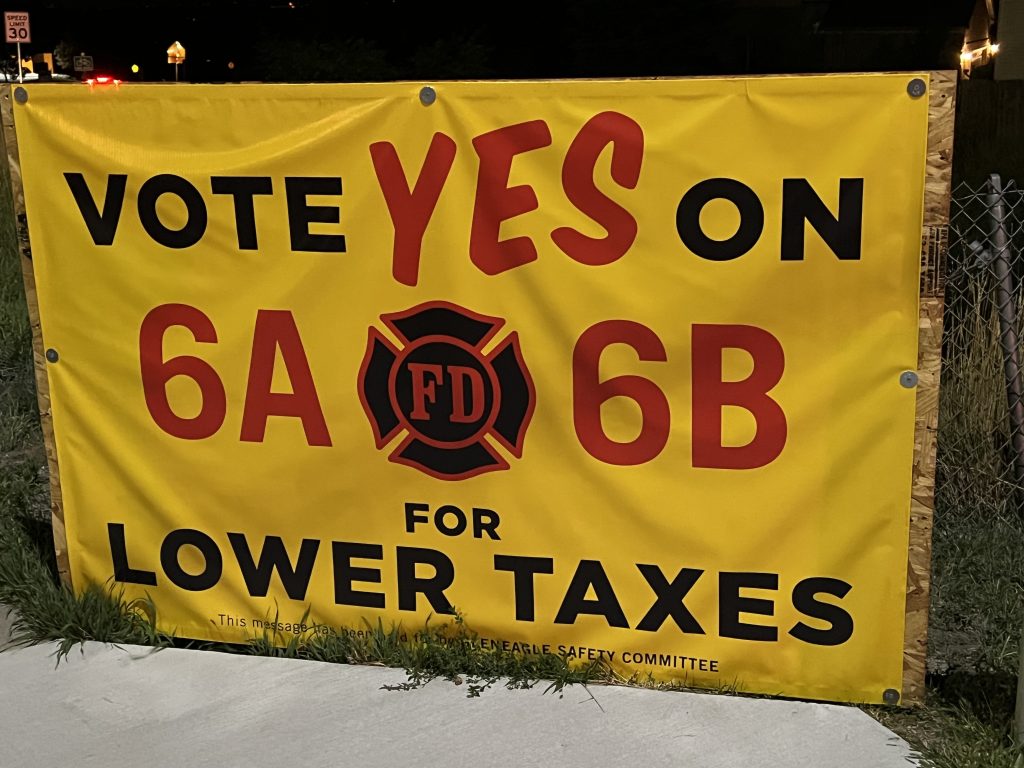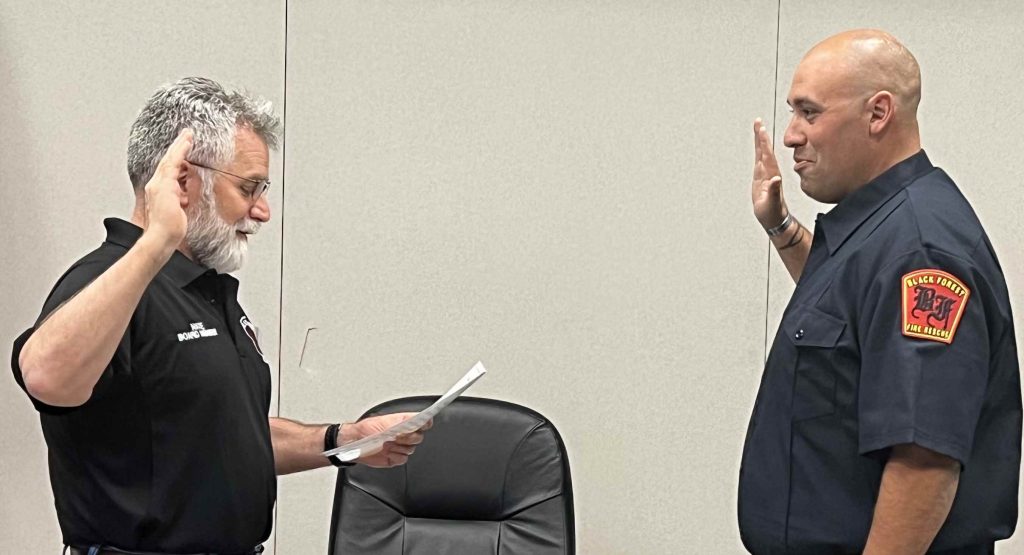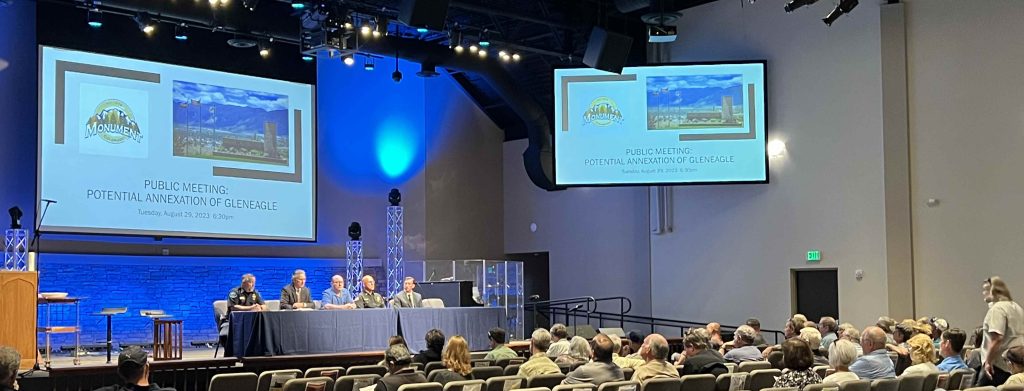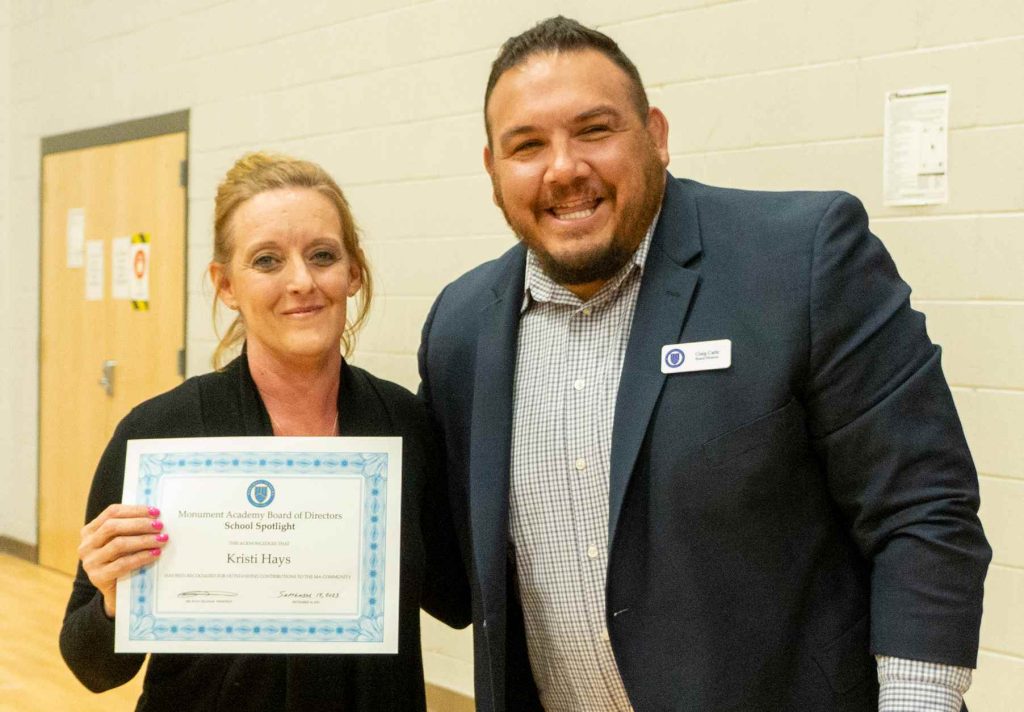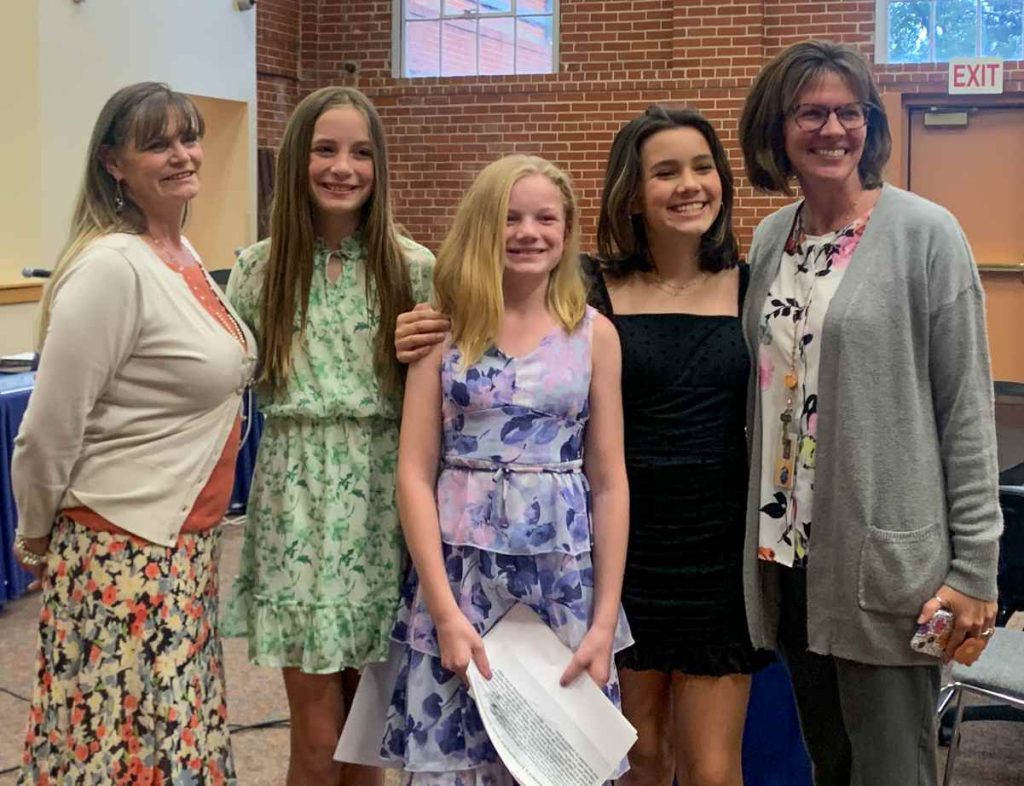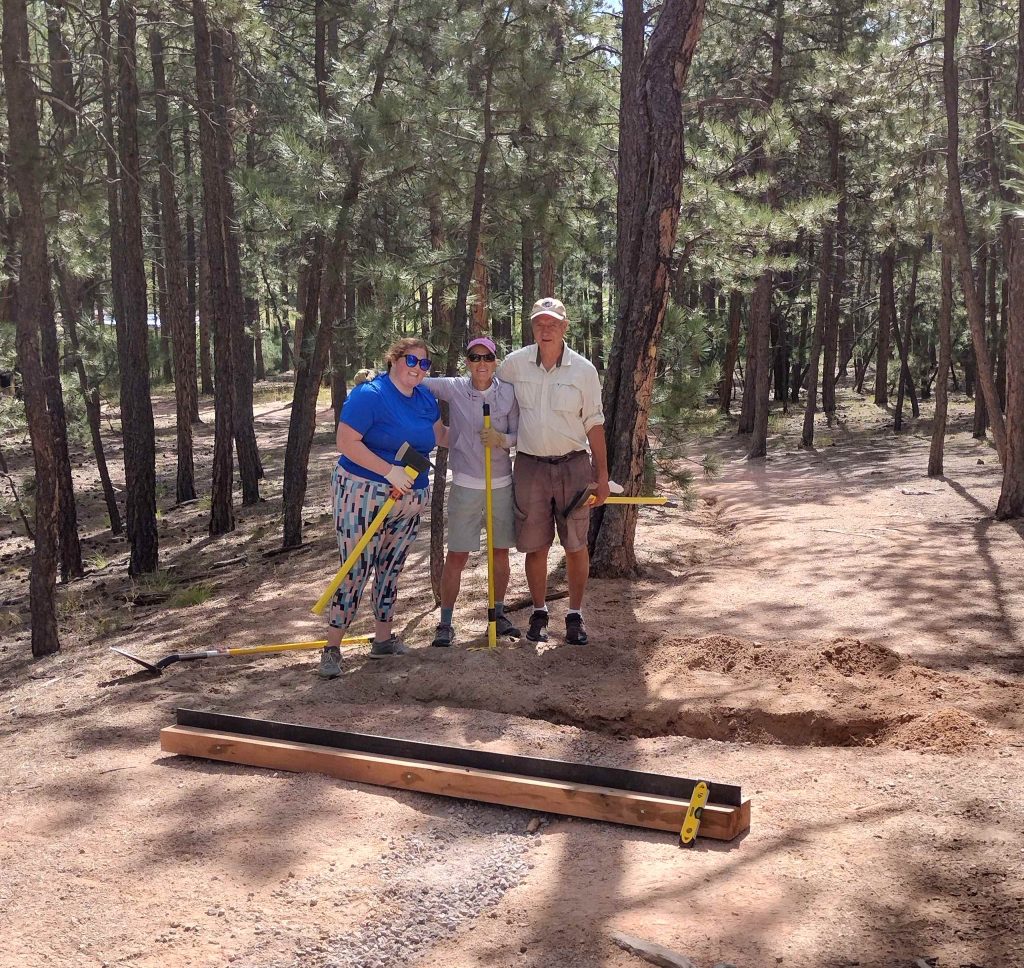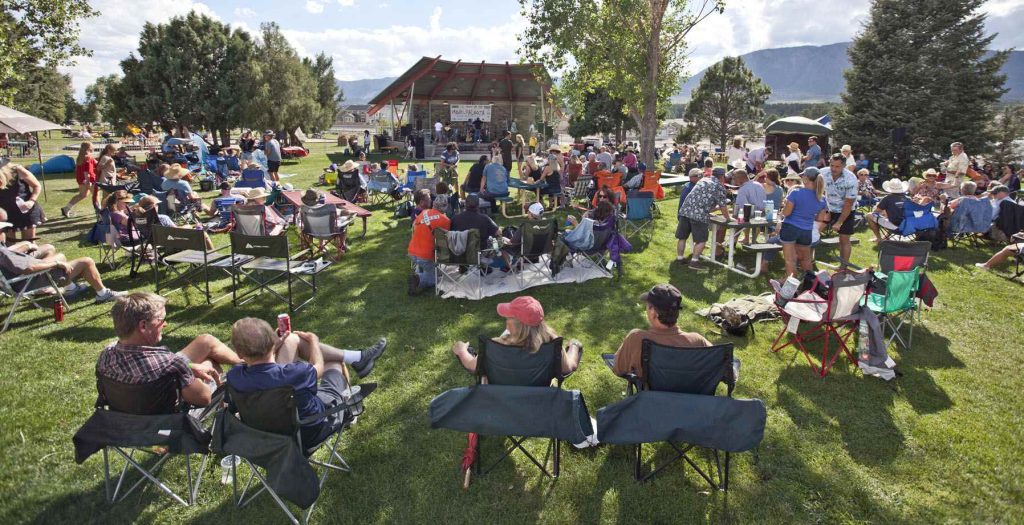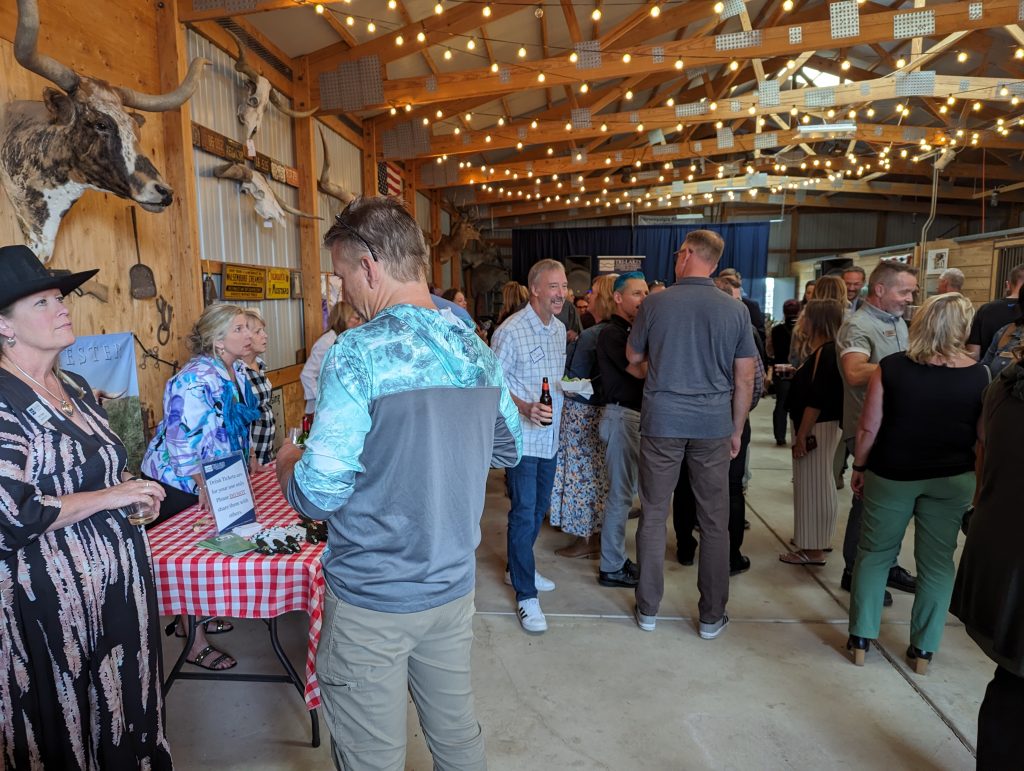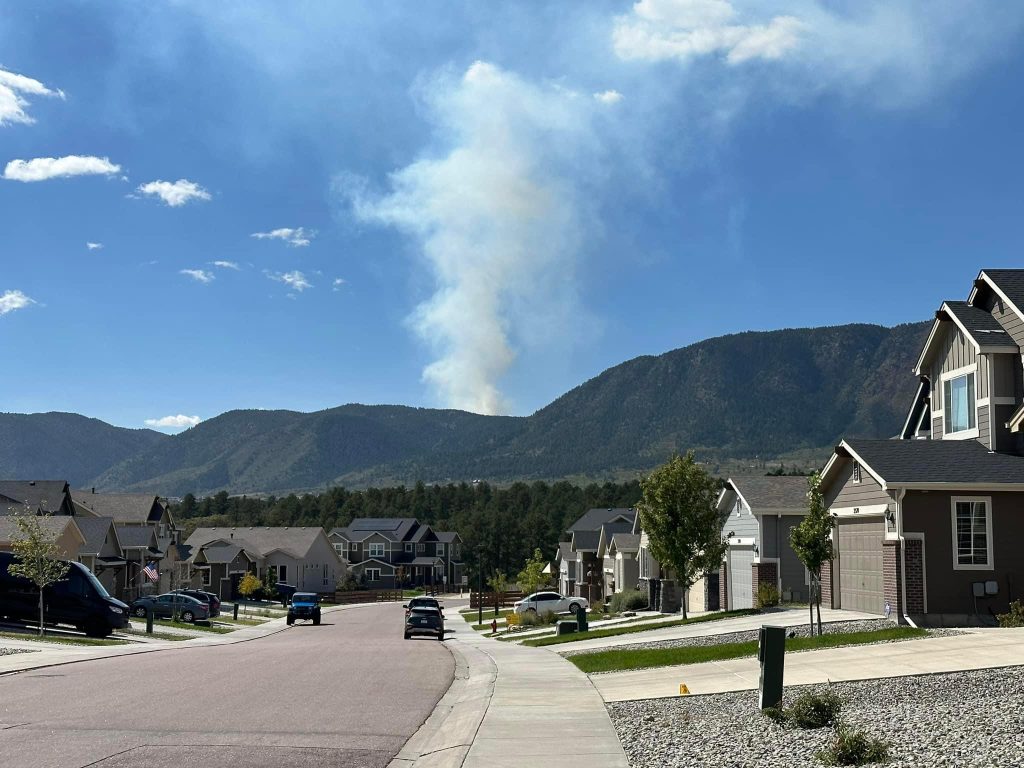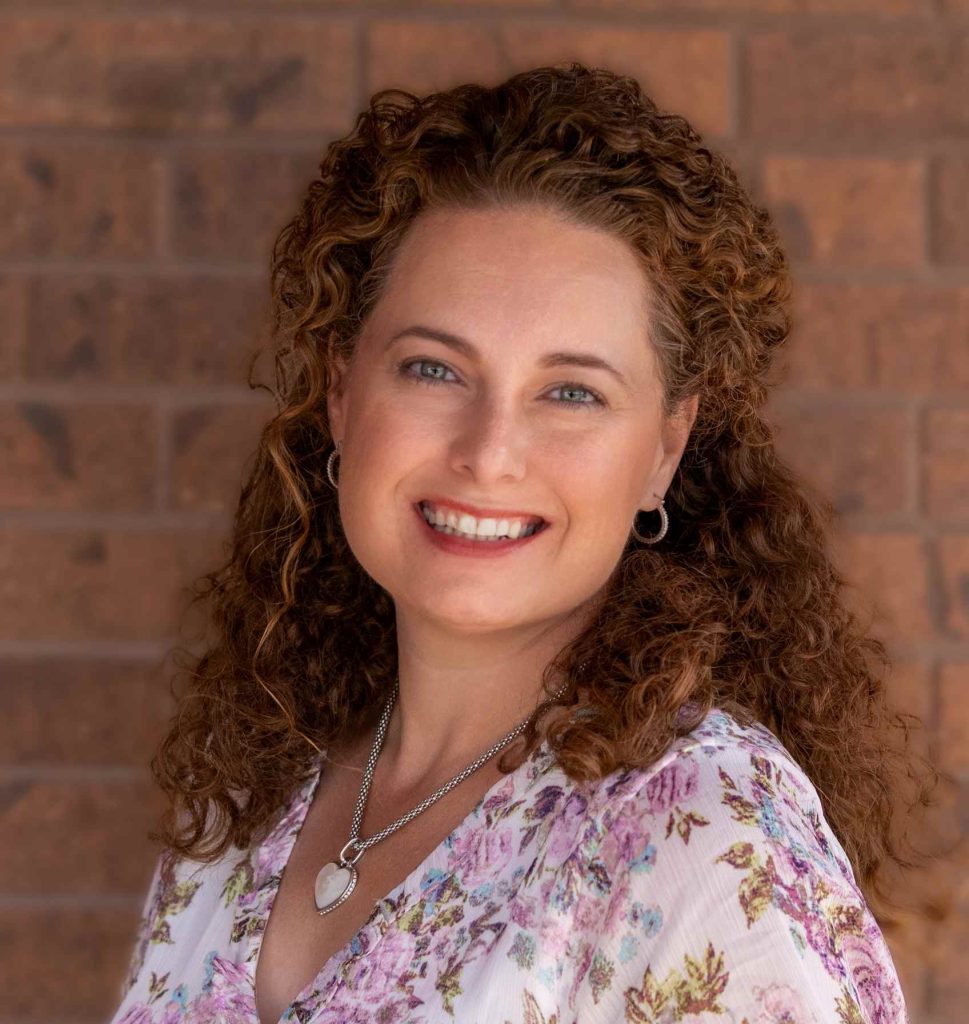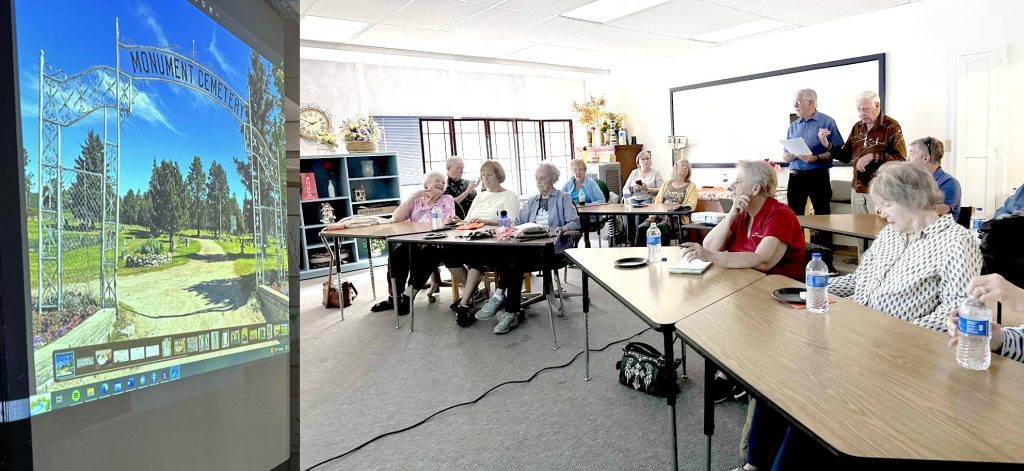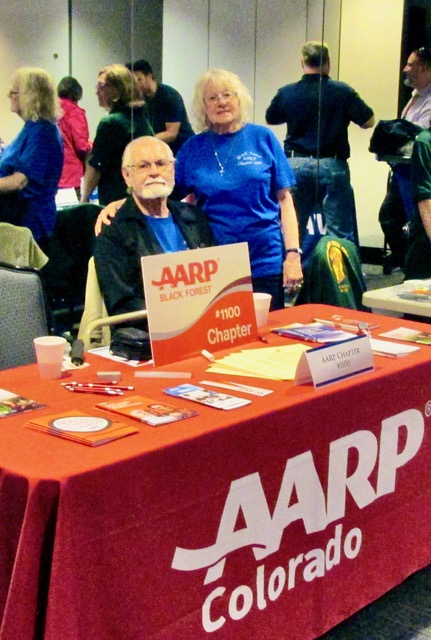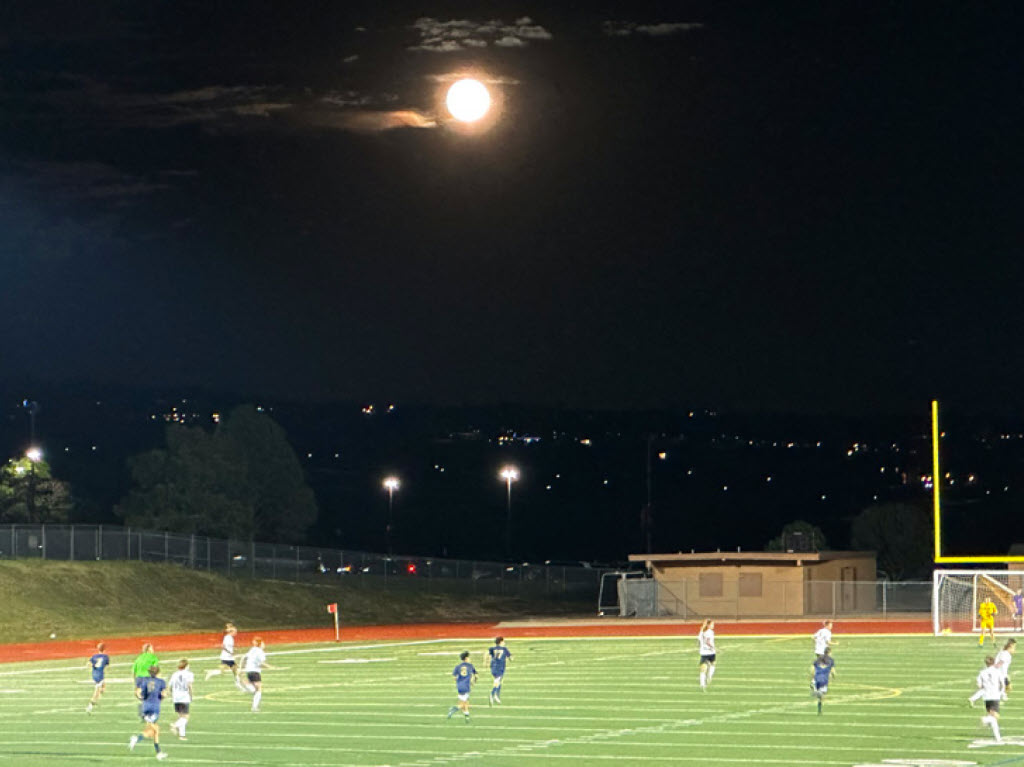- Flying Horse North service plan
- Colorado Pumpkin Patch special use permit approved
- Steppler Road rezone
- Tri-Lakes Cares update
- Other decisions
By Helen Walklett
During September, the El Paso Board of County Commissioners (BOCC) approved the Flying Horse North (FHN) service plan with a total debt cap of $400 million, the largest of any El Paso County metro district. It also heard a special use application from Colorado Pumpkin Patch to increase the allowed parking numbers at its pumpkin patch. The commissioners also made decisions relating to a Tri-Lakes area property and received a Tri-Lakes Cares update.
Flying Horse North service plan
At the Sept. 28 BOCC land use meeting, the commissioners voted to approve the service plan for FHN Metropolitan Districts Nos. 1-5.
The application came to the BOCC from the Aug. 3 El Paso County Planning Commission hearing with a 5-3 vote recommending approval. The commissioners opposed at that meeting questioned the district’s financial ability to discharge the proposed indebtedness on a reasonable basis.
The 910-acre area covered by the plan is the property for which a revised sketch plan was approved in November 2022. See https://www.ocn.me/v22n12.htm#epbocc.
Attorney Russ Dykstra, partner, Spencer Fane, representing the applicants, said they had taken the Planning Commission’s concerns very seriously and had revised the financial plan after further analysis, reducing the estimated home values for the hotel and custom lot single-family homes to $3.5 million and the branded flats to $2.5 million. As a result, the maximum authorized debt limit had been reduced from $450 million to $400 million to reflect the reduced estimated debt capacity of the districts. The buildout has been extended from six to 11 years to address potential slowdowns in construction of the project. The service plan includes a debt service mill levy of 50 mills for commercial and residential property, and an operations and maintenance mill levy of 15 mills, for a total maximum combined mill levy of 65 mills.
Kari Parsons, senior planner, Planning and Community Development Department, said the statutory purposes of the district would be very standard and would include street improvements, the design, construction, and maintenance of drainage, sanitation, and recreation facilities, and covenant enforcement.
The residential portion of the development is about 844 acres and will be located in districts 2-4 with the commercial development being located in 1 and 5. Commissioner Longinos Gonzalez Jr. was concerned that District 1, which is commercial in nature, will be the operations and construction district with financial leadership. He asked if residents would ever be able to get control of that district. Meggan Herington, executive director, Planning and Community Development, said it was her understanding that property owners within the district would be in control of it, i.e., whoever owns the commercial property unless some residential is built on the portion for which nothing is yet planned.
During the public comment part of the hearing, three people spoke against the application. No one spoke in support.
Joe Hall, a High Forest Ranch resident, said the bond issuance is not reasonable because the applicant is relying heavily on a refinance in 10 years at a lower interest rate when financial projections beyond 10 years are highly unreliable. With regard to interest rates which the applicant had said would be at 4% in 2035, he commented, “I don’t know what it [the interest rate] is going to be but neither does the applicant. The amount of this debt issuance is more than $400,000 per approved lot. It’s nuts.”
FHN resident Phil Shecter, who has spoken against the FHN revised sketch plan in the past, addressed the hearing at length using time donated by others. He said wording in the applicant’s documentation allows property within five miles of the districts’ boundaries to be brought in and taxed despite county staff and the applicant saying the districts will not affect other properties. He questioned the justification for the service plan when there was no commitment from any hotel developer. Shecter also told the commissioners that neighbors to the 912 acres covered by the FHN sketch plan had received notification from the developer that it was proposing the sale of 50, 2.5-acre lots on well and septic. These would be within the metro districts’ boundaries but would get no benefit from that in terms of water and wastewater services. He urged the commissioners to deny the application until a hotel contract and a preliminary plan are in place.
Rick Stauch, a Cathedral Pines resident, spoke in his capacity as vice president of the Board of Directors of the Cathedral Pines Metropolitan District and to represent the homeowners associations of Cathedral Pines and the surrounding communities and the FHN residents. He said resale of the planned FHN properties would be difficult due to the tax structure because prospective buyers would be faced with very high property taxes. He questioned the assumption that a branded hotel will come given the limited year-round leisure activities in the area.
He asked, “Does this proposal demonstrate that the proposed districts have or will have the financial ability to discharge the proposed indebtedness on a reasonable basis? We don’t think so. I mean why would a homebuyer want to purchase a home in an area with some of the highest property taxes in the county when there are other desirable areas nearby that don’t have same the tax burden?” Stating that there are several problems with the service plan as written, with many ambiguities, inconsistencies, and inaccuracies, he urged the commissioners to have the applicant rewrite the plan. He ended, “The future residents of FHN need and frankly deserve your protection. Please do not approve this proposal.”
In rebuttal, Dykstra said the districts had no power to force property owners outside the boundaries to join them, but owners could petition to be allowed to join should they wish. Lori Seago, senior assistant county attorney, had earlier also clarified this, stating that it could not occur without the consent of the property owner. He said the presentation of the service plan was not premature as Shecter had suggested but necessary as the developer needed to know finance was available for the needed infrastructure before going any further.
Gonzalez voiced his concerns about the service plan and the economic feasibility of the project, citing other developments with much less debt maximums that were providing a lot more housing. “When we see something at $400 million of debt, it asks the question, you must ask the question “is this viable?’ He asked, “Is this project even viable if you’re having to ask for something that is twice as much as any other district is utilizing?”
He continued, “Does it make sense to do so [approve $400 million of debt for 900 homes] for what would be the richest neighborhood in entire El Paso County and have the most debt for a metro district? And why that concerns me secondarily is because we provide specific ownership tax to these projects. So, we are subsidizing in part to these projects.”
He said, “I still have great concerns about the fact that the way this district system is set up will not allow residents to have say in the way finances will happen. Now the applicant stated at some point the residents will take over but, as was stated before, by our planning director, District 1 has commercial and the fitness center but there was no stated specific plan for what would happen in that one corner of commercial. If it’s not commercial, then the whole district and the finances for the entire metro district will be planned by the fitness center. I don’t think that’s going to be sold to a third party, that’s going to be owned by the developer. The developer potentially will have control of this district forever and residents will never have a chance to have control of this metro district. That’s the possibility that exists with this. I think that’s unacceptable. We’re supposed to be representing everybody including the applicant but also the residents and if we’re not going to stand by residents having some kind of control, that doesn’t make sense to me.” “It doesn’t make sense and residents will look at us, El Paso County residents will look at us, and we lose credibility I think if this gets approved this way.”
Gonzalez then moved to deny but the motion failed as there was no second.
Commissioner Holly Williams said she appreciated the applicant’s effort to reduce the amount of debt being asked for and the extra fees placed on some of the commercial parts to help pay down the debt. She also stated the homeowners would have the opportunity to serve on the board. She moved to approve and was seconded by Commissioner Stan VanderWerf.
VanderWerf commented, “I really do appreciate the comments from Commissioner Gonzalez. Sometimes he is truly the conscience of some of the issues that we have before us. But we do have a severe, severe housing shortage and some people have a lot of money and can afford to do these kinds of things and other people don’t and we have to be responsible I think for a wide variety of people that have different levels of wealth.”
Gonzalez commented, “I think the application with all the inclusions is an insult to the public and to residents and all El Paso County.” He moved three amendments to the motion, but the legal advice was that they were beyond the scope of the board’s authority on the matter.
Gonzalez commented, “I absolutely believe we will lose credibility today based on what I’m about to see happen right now and people are going to respect this board less. I think I’m going to respect this board a lot less after what I am about to see.”
The vote to approve was 3-1. Gonzalez was the no vote and Commissioner Carrie Geitner was excused.
Gonzalez said, “I’d like us to look at our code again because if we’re going to approve this, we have no rationale to disapprove any in the future so we might as well give administrative control over metro districts to our director because I think she’ll probably do a better job than what I just saw today.”
Colorado Pumpkin Patch special use permit approved
At the Sept. 14 BOCC land use meeting, the commissioners approved a special use permit for an increase in parking numbers for the Colorado Pumpkin Patch at the Colorado Kids Ranch. The hearing lasted almost eight hours.
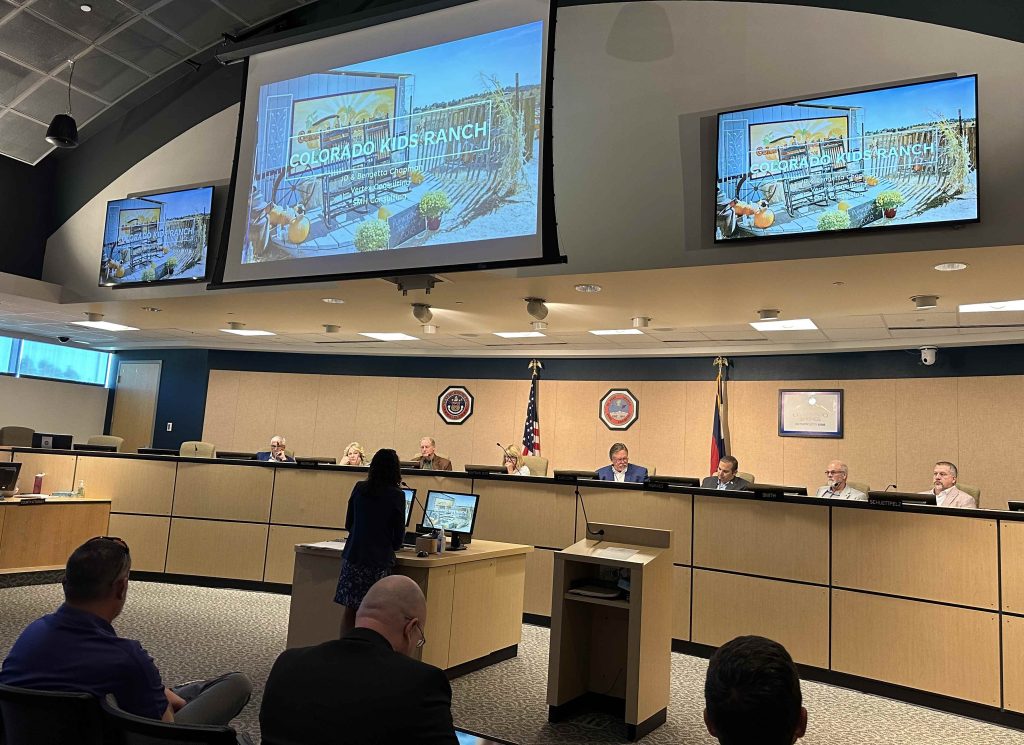
The application came to the BOCC from the Sept. 7 Planning Commission meeting with a recommendation for denial by a 5-3 vote. The Planning Commission had concerns about traffic, neighborhood safety, and the number of vehicles permitted on-site. There was also significant discussion about the conditions of approval and the timing of required road improvements.
The 40-acre Monument property is located off Highway 105 and is zoned RR-5 (residential rural). Since 2018, owner John (JD) Chapman has operated an agritainment business which is a permitted use under the zoning and limits cars to a maximum of 50. The Pumpkin Patch operates for six weeks every year, beginning in late September. Chapman also holds a tulip festival over two weekends in May and runs summer youth camps. His nonprofit, the Johnny Pumpkinseed Program, allows families with foster or special needs children to enjoy the pumpkin patch for free.
As the pumpkin patch became more successful, the number of cars parking at the property exceeded the permitted 50. This generated complaints from neighbors which saw the county issue code violations and led to Chapman applying for a special use permit to increase the parking cap to 325. Although the property is adjacent to Highway 105, it does not have direct access to it and so visitors use Canterbury Drive and then the unpaved Saddlewood Road to reach the property.
The county has received a lot of correspondence about the traffic driving to and from the property, both in support and opposition. At the Planning Commission, neighbors raised concerns about traffic congestion, public safety, noise, dust, fire danger in a heavily wooded area with no hydrants, and littering.
Eleven citizens voiced these complaints again at the BOCC hearing. Neighbor Rikki Van Pelt said, “My kids personally were almost hit on our own property. We’ve had people drive through our backyard to try to find the pumpkin patch.” Other neighbors testified to the volume and speed of traffic making it dangerous to walk or ride horses in the neighborhood when the Pumpkin Patch is in operation. One neighbor stated that the particulates in the dust could stay airborne for 10 days and questioned what carcinogens or other contaminants might be in it.
Eleven citizens spoke in support, commenting that the patch provided good family entertainment in a safe place, created community, and gave families the opportunity to reconnect with agriculture and farming. Many commented that Chapman provides valuable work opportunities for young people and commended his mentoring of young employees.
The commissioners heard that county staff had recommended several road improvements both on and off the property to be paid for by Chapman as part of the special use permit and to mitigate the neighbors’ concerns. These include turn lanes on Highway 105 at Canterbury Drive, the paving of Saddlewood Road up to the property’s entrance, asphalt chippings in the parking lot and driveway, and a privacy fence on the western boundary. The recommendation was that all be completed by September 2024.
Nina Ruiz of Vertex Consulting Services, representing the owner, said Chapman was willing to make all the required improvements but would need longer to be able to afford them. Chapman is proposing an alternative timeline which would see the improvements completed in stages up to the end of 2028. Craig Dossey, also with Vertex, mentioned the cost of the improvements again as he argued for the special permit stating, “Quite frankly, if he’s [Chapman] asked to do $1 million of improvements, he needs to have more income. That’s business. That’s just good business. He can’t afford $1 million of improvements both onsite and offsite and operate six weeks of the year.”
Earlier in the year, Chapman applied for a deviation to allow direct access from Highway 105 which was denied as county plans to reduce the number of access points directly onto the highway as part of its Highway 105 Improvements Project. The proposed access would also have been too close to other access points, raising safety concerns. Both Ruiz and Dossey argued again for access direct from the highway during the events, stating this would also be the neighbors’ preferred solution and would reduce Chapman’s costs.
Addressing the commissioners, Dossey said, “Today’s the day to help a small business continue to survive.” He added, “Agricultural uses are going by the wayside. If we do not allow them to supplement their income, they will be gone.”
The vote to approve was 4-0 with Gonzalez absent. The commissioners adopted the longer time limits proposed by Chapman with the intention that the longer timeframe be used to explore further the possibility of access from Highway 105. Moving for approval, Commissioner Carrie Geitner said, “I’ll say for my part specifically, I’m not convinced that routing the traffic through the neighborhood is more safe than providing an additional access point [on Highway 105], and safety is a primary concern.”
The Pumpkin Patch opened for the 2023 season two days after the hearing, on Sept. 16. See photo and caption on page < 1 >.
Neighbor David Elson addressed the Sept. 23 Planning Commission meeting to thank the commissioners for their Sept. 7 decision on the application and to criticize that of the BOCC. He said, “Our neighborhood’s residents feel betrayed by the commissioners who cast aside our land code’s restrictions in favor of a specific interest and their own self-interest.” He continued, “The agritainment concept is relatively new, being adopted by the code in 2017. It was written specifically to enable the Colorado Pumpkin Patch to relocate from its proximity to Matthew Dunston’s Preserve at Walden housing development into our neighborhood, zoned residential.” “Having donated a 23-acre site for the construction of Monument Academy High School and after his donations of thousands of dollars to election campaign funds of current county commissioners, Matthew Dunston is the darling of the commissioners and the track record shows that what Matthew Dunston wants from the commissioners, he gets from the commissioners.”
He spoke again at the Sept. 28 BOCC land use meeting to suggest that Dunston had in some way influenced the decision, stating, “Why does he so dearly want 325 vehicles on the Colorado Pumpkin Patch property? Well, you don’t have to look any further than the fact that two years ago, he bought 40 acres 2,000 feet away from Colorado Pumpkin Patch on the east side of our Canterbury Estates neighborhood.” Elson ran out of time before he could explain further and said he would send that information to the commissioners via email.
Steppler Road rezone
Also at the Sept. 28 meeting, the commissioners voted to approve an application by Charlie Stewart to rezone his 36-acre property at 16850 Steppler Road, half a mile from the intersection of Settlers Ranch Road and Steppler Road, from RR-5 (residential rural) to RR 2.5 (residential rural).
The application was treated as a consent item, meaning there was no discussion. It came from the Sept. 7 Planning Commission meeting with a 6-1 vote recommending approval. Commissioner Brandy Merriam was the no vote due to concerns about losing land for livestock in the eastern part of the county.
The property currently consists of a single-family home and cattle/ranching infrastructure. The applicant’s intention is to plat 2.5-acre residential lots in the future.
Tri-Lakes Cares update
The commissioners approved the submission of a Community Services Block Grant application at the Sept. 26 meeting. Haley Chapin, executive director, Tri-Lakes Cares, which receives part of its funding through the grant, spoke in the public comment portion of the meeting to thank them, telling the commissioners that requests for support have not gone back to pre-pandemic levels but continue to increase. At the same time, available funding has been reduced as COVID-associated funding has been taken away. She said increasing inflation is also affecting many.
Commissioner Holly Williams said, “The money has now been cut back to what would now be a post-COVID level, which is what we expected, but there’s just a lot of struggles for many people in the community to feed their families.”
Chapin said the mix of clients seeking assistance had diversified a little more on the income continuum, “We are seeing people who make more and are now in need. It’s starting to creep into the middle-class space.”
Other decisions
- Aug. 29—the commissioners approved the appointment of James Byers as a regular member of the Planning Commission. His term runs until Aug. 29, 2026.
- Aug. 29—approved a special warranty deed and a temporary construction easement associated with the Beacon Lite Road/County Line Road improvements project. They are associated with property owned by David K. Chin and come at a cost of $19,000.
Helen Walklett can be reached at helenwalklett@ocn.me.
Other El Paso County Board of County Commissioners articles
- El Paso County Board of County Commissioners, April 10 – Two local projects approved by the county (5/3/2025)
- El Paso County Board of County Commissioners, March 13 and 18 – Misfits Crew Estates Final Plat approved (4/5/2025)
- El Paso County Board of County Commissioners, Feb. 11 – $4 million in federal funds approved for North Gate Blvd./Struthers Road stormwater project (3/1/2025)
- El Paso Board of County Commissioners, Jan. 14 – Three commissioners sworn into office; chair and vice chair appointed (2/1/2025)
- El Paso Board of County Commissioners, Dec. 10, 12, and 17 – Two Tri-Lakes developments approved (1/4/2025)
- El Paso Board of County Commissioners, Nov. 5 and 14 – Approval of two Tri-Lakes developments (12/5/2024)
- El Paso Board of County Commissioners, Oct. 8 and 15 – County presents its 2025 preliminary balanced budget (11/2/2024)
- El Paso Board of County Commissioners, Sept. 12, 24, and 26 – Development approvals for Black Forest and Palmer Lake projects (10/5/2024)
- El Paso Board of County Commissioners, July 9 and 25 – Black Forest property to be divided into two lots (8/3/2024)
- El Paso Board of County Commissioners, June 13, 25, and 27 – Monument glamping expansion approved; short-term rental allowed to continue at Black Forest property (7/6/2024)

